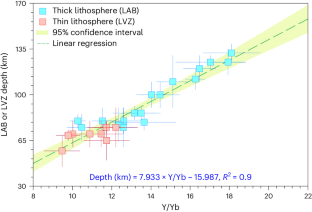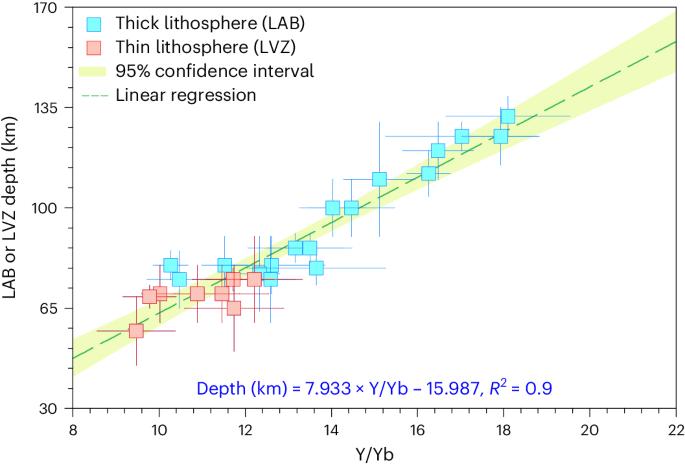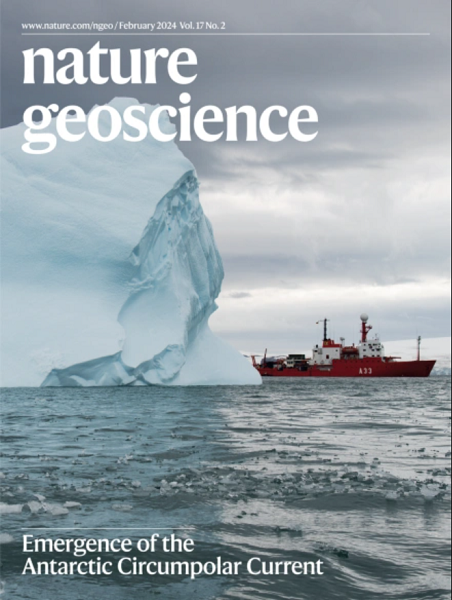Widespread two-layered melt structure in the asthenosphere
IF 16.1
1区 地球科学
Q1 GEOSCIENCES, MULTIDISCIPLINARY
引用次数: 0
Abstract
Partial melts in the Earth’s convecting mantle influence its physical and chemical state, particularly the plasticity of the asthenosphere and the dynamics of plate tectonics. Melt compositions change systematically with the depth of mantle melting, but there are currently few quantitative constraints. Here we measure major and trace elements, combined with Hf–Nd isotope measurements, for basalts from North China. In addition, we compile a dataset of basalts from various oceanic and continental settings and find a quantitative link between the depth of basaltic melt extraction and its mean Y/Yb ratio. We show that a bimodal Y/Yb distribution is widespread in oceanic and continental basalts, consistent with two distinct depths of melt accumulation in the asthenosphere. Silica-rich basaltic melt accumulates at depths of 80–110 km and silica-poor, iron-rich melt at depths of 140–165 km, with a melt-free gap at a depth of 110–140 km. Our findings suggest that a two-layered melt structure may be more widespread in the asthenosphere than previously thought, particularly in areas of active or passive mantle upflow. The presence of two melt layers beneath fast-spreading plates and rifted continental margins may reduce the basal drag force on cratonic roots and aid with the breakup of cratons and supercontinents. The accumulation of partial melt at two distinct depth ranges in the asthenosphere is widespread, including in areas of mantle upflow, according to a study of Y/Yb compositions of oceanic and continental basalts.


星体层中广泛存在的两层熔体结构
地球对流地幔中的部分熔体影响着地幔的物理和化学状态,特别是影响着岩石圈的可塑性和板块构造的动力学。熔体成分会随着地幔熔化深度的增加而发生系统性变化,但目前几乎没有定量的约束条件。在这里,我们测量了华北玄武岩的主要元素和痕量元素,并结合 Hf-Nd 同位素测量。此外,我们还汇编了来自不同海洋和大陆环境的玄武岩数据集,并发现了玄武岩熔融萃取深度与其平均Y/Yb比值之间的定量联系。我们的研究表明,Y/Yb的双峰分布在大洋和大陆玄武岩中非常普遍,这与天体层中两种不同的熔体堆积深度相一致。富含二氧化硅的玄武岩熔体堆积在 80-110 千米深处,而贫硅、富含铁的熔体堆积在 140-165 千米深处,在 110-140 千米深处有一个无熔体间隙。我们的研究结果表明,两层熔体结构在星体层中的分布可能比以前认为的更为广泛,尤其是在活动或被动地幔上升流地区。在快速扩张的板块和断裂的大陆边缘下面存在两层熔体,可能会减少板块根部的基底阻力,有助于板块和超大陆的断裂。
本文章由计算机程序翻译,如有差异,请以英文原文为准。
求助全文
约1分钟内获得全文
求助全文
来源期刊

Nature Geoscience
地学-地球科学综合
CiteScore
26.70
自引率
1.60%
发文量
187
审稿时长
3.3 months
期刊介绍:
Nature Geoscience is a monthly interdisciplinary journal that gathers top-tier research spanning Earth Sciences and related fields.
The journal covers all geoscience disciplines, including fieldwork, modeling, and theoretical studies.
Topics include atmospheric science, biogeochemistry, climate science, geobiology, geochemistry, geoinformatics, remote sensing, geology, geomagnetism, paleomagnetism, geomorphology, geophysics, glaciology, hydrology, limnology, mineralogy, oceanography, paleontology, paleoclimatology, paleoceanography, petrology, planetary science, seismology, space physics, tectonics, and volcanology.
Nature Geoscience upholds its commitment to publishing significant, high-quality Earth Sciences research through fair, rapid, and rigorous peer review, overseen by a team of full-time professional editors.
 求助内容:
求助内容: 应助结果提醒方式:
应助结果提醒方式:


